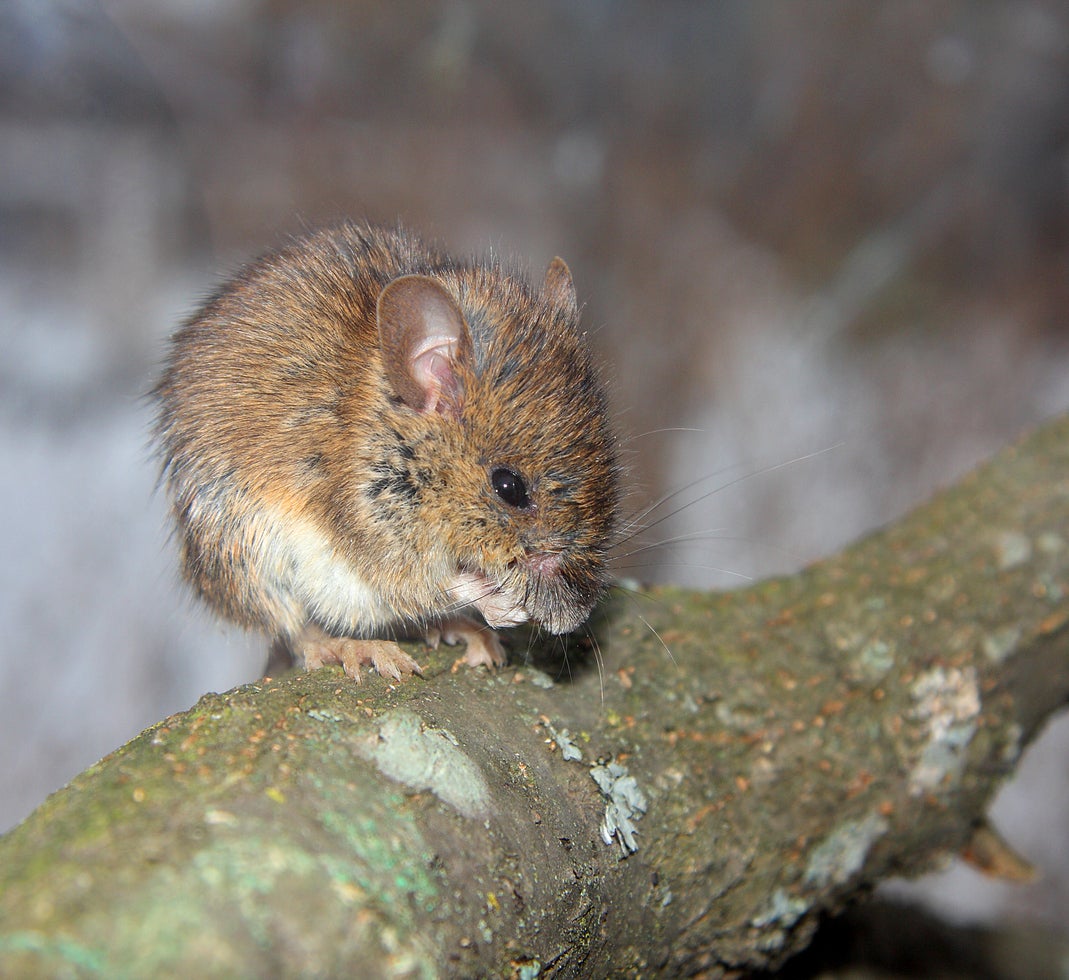Mouse Bark Damage: Keeping Mice From Eating Tree Bark


In winter, when food sources are scarce, small rodents eat what they can find to survive. This becomes a problem when your tree bark becomes a mouse meal. Unfortunately, mice chewing on trees can cause serious damage. Read on for information on mouse bark damage as well as tips on keeping mice from eating tree bark in your yard.
Determining When Mice are Eating Tree Bark
Trees add so much to a garden or backyard. They can be expensive to install and require regular irrigation and maintenance, but most homeowners find it well worth the trouble. When you first see mouse bark damage, you may feel that your house is under attack. Just keep in mind that small rodents need food to survive the winter too. The mice are eating tree bark as a last resort, not to annoy you.
First, make certain it’s actually mice eating the tree bark. It’s important to be sure of the issue before you take action. Generally, if the bark is being eaten by mice, you will see gnawing damage at the base of the tree trunk near the ground.
When mice are eating tree bark, they may chew down through the bark to the cambium underneath. This disrupts the trunk’s system of transporting water and nutrients. When mouse tree damage girdles the tree, the tree may not be able to recover.
Keeping Mice from Eating Tree Bark
Don’t think you have to put out poison or traps to stop mice chewing on trees. You can usually start keeping mice from eating tree bark without killing them. When bark is being eaten by mice, especially tough trunk bark, it is because other food sources have dried up. One way to protect your trees is to provide mice with other food.
Many gardeners leave autumn branch trimmings on the ground beneath trees. Branch bark is more tender than trunk bark and mice will prefer it. Alternatively, you can sprinkle sunflower seeds or other food for rodents during the coldest months.
Another idea for keeping mice from eating tree bark is to remove all weeds and other vegetation from around the base of trees. Mice don’t like being in the open where they can be spotted by hawks and other predators, so removing cover is a cheap and effective way to prevent mouse bark damage, and also works well for keeping mice out of the garden too.
Sign up for the Gardening Know How newsletter today and receive a free copy of our e-book "How to Grow Delicious Tomatoes".
While you are thinking of mice predators, you might also encourage them to hang around in your yard. Putting in perch poles is likely to be a welcome mat for attracting birds of prey like hawks and owls, which can itself keep mice away.
You can also prevent mice chewing on trees by placing physical protections up around the tree trunk. For example, look for tree guards, plastic tubes you can position around your tree trunks to keep them safe.
Look for mice and rodent repellents in your garden or hardware store. These taste bad to mice eating your tree bark, but don’t actually harm them. Still, it can be enough to prevent mouse bark damage.

Teo Spengler is a master gardener and a docent at the San Francisco Botanical Garden, where she hosts public tours. She has studied horticulture and written about nature, trees, plants, and gardening for more than two decades, following a career as an attorney and legal writer. Her extended family includes some 30 houseplants and hundreds of outdoor plants, including 250 trees, which are her main passion. Spengler currently splits her life between San Francisco and the French Basque Country, though she was raised in Alaska, giving her experience of gardening in a range of climates.